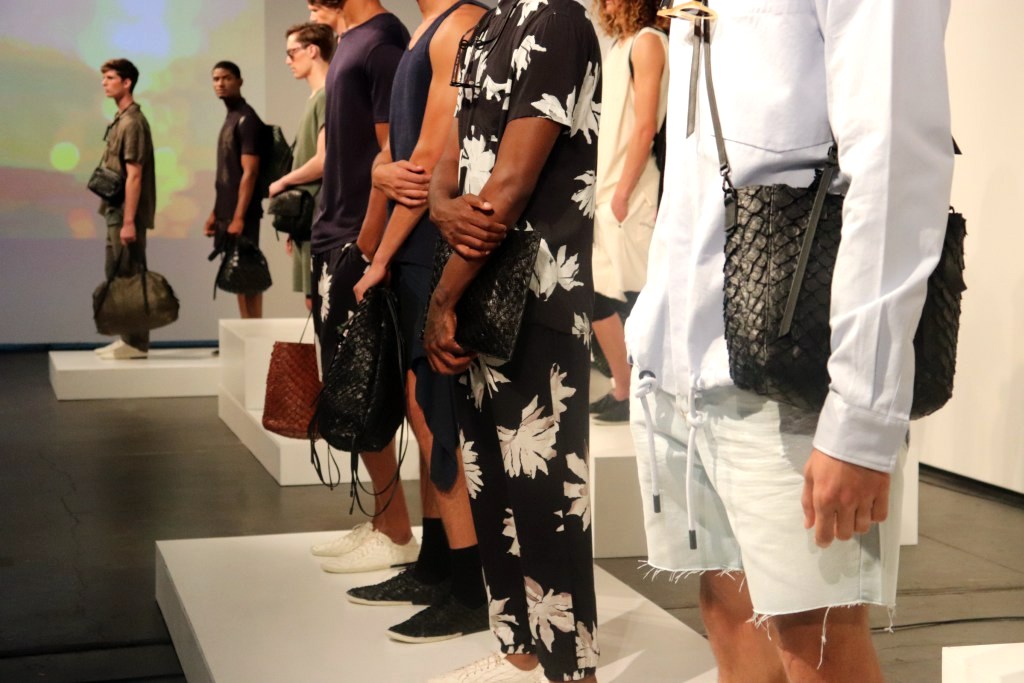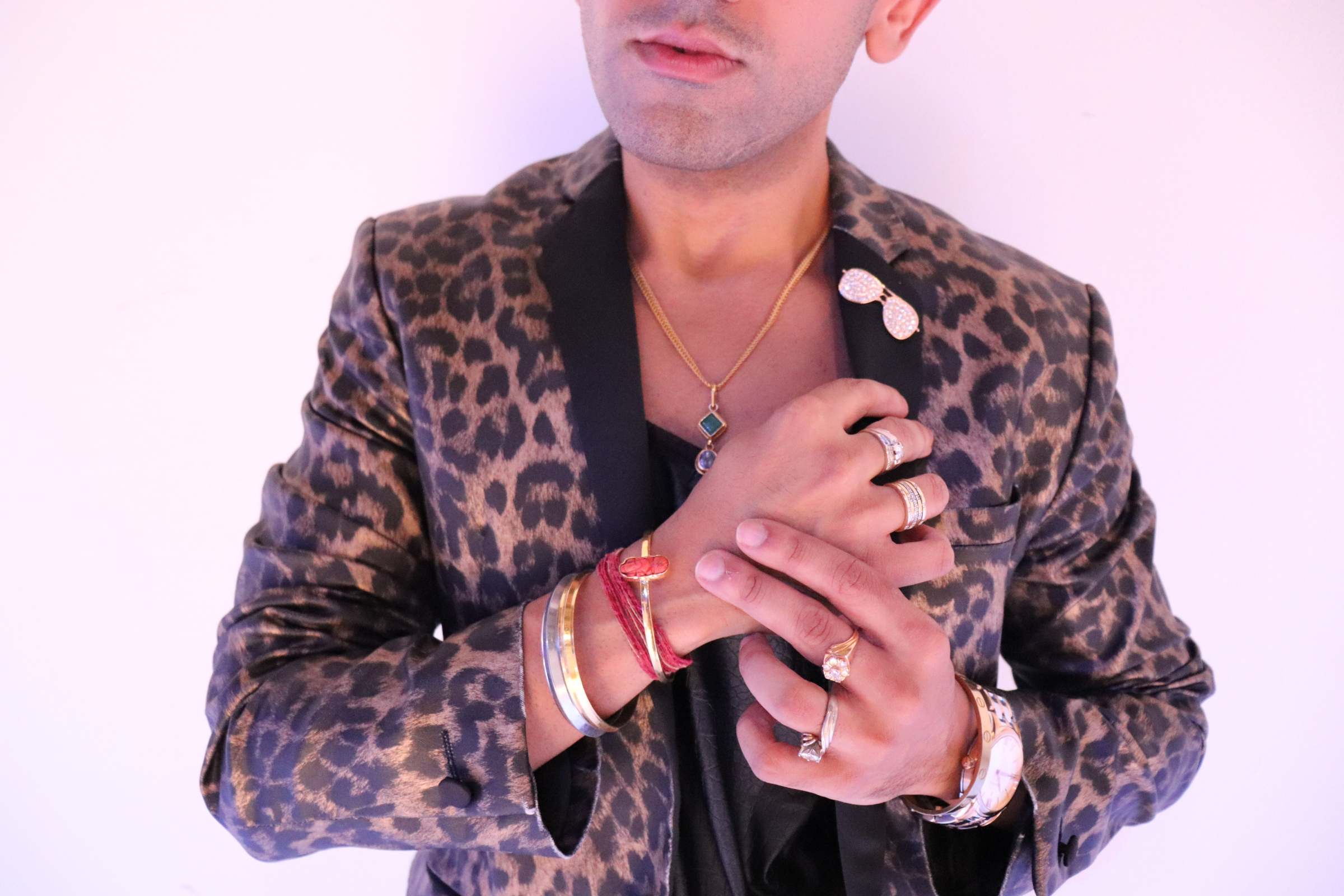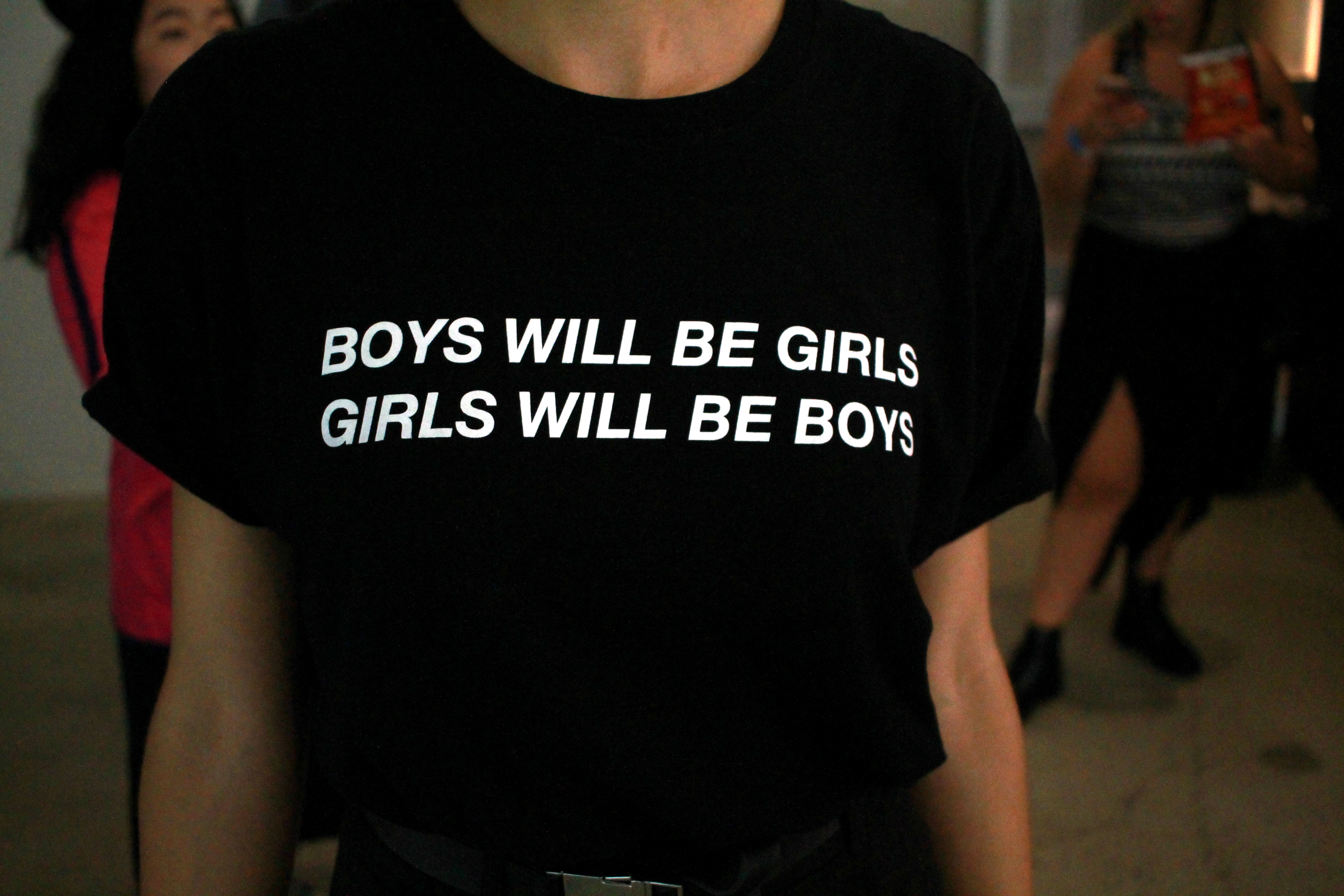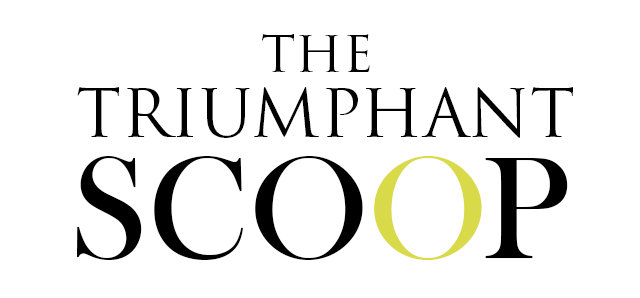Blurring Binaries: A Look Inside NYC’s Genderless Fashion Scene

Danya Hajjaji is a Libyan journalist based in New York…
Back in July, I had the amazing opportunity to attend New York Men’s Fashion Week. While running around different Manhattan showrooms was exhausting, those few days proved to be quite the learning experience.

I thought Men’s Fashion Week was less popular, thus more low-key than springtime’s NYFW. I was also under the assumption that the most casual outfits I’d see would be yacht party looks. Man, was I wrong.
NYMFW outfits varied greatly, ranging from ripped jeans to tailored suits. One fascinating trend I noticed were male guests’ blatant disregard of gender roles. I saw skirts over hairy, muscular legs. Smokey eye makeup above beards. Large hands stacked with rings clutching handbags. Bulky figures walking in heels ever so gracefully. Strong jaws and sharp cheekbones highlighted with perfect contouring.
[ngg_images source=”galleries” container_ids=”5″ display_type=”photocrati-nextgen_basic_imagebrowser” ajax_pagination=”0″ order_by=”sortorder” order_direction=”ASC” returns=”included” maximum_entity_count=”500″]Though the fashion world isn’t without flaws, its experimental nature is so quintessential that (almost) anything goes. As a result, trends such as gender interchangeability do not attract disapproval. Additionally, New York proves to be the perfect host for stylish crowds who eschew traditional gender norms. Many of the attendees I spoke to lauded the city for being so open-minded.
Sourabh Sharma, a 29-year-old social media influencer who has collaborated with brands such as Moschino, was decked out in gold jewelry complimenting his leopard-print blazer. “Anywhere else you go, people are like ‘Really? What are you wearing?’” he said. “And in New York, nobody cares.” Najja Plowden, 39, is a veteran, personal trainer and soccer coach. “I remember when people started wearing pink, and I was like ‘Man, I’d never wear pink!’” he says. “And then Fat Joe started rapping in pink. The next thing you know, all these men are walking around wearing pink. Everything you start seeing with people changing the way they dress based on what hip-hop is doing looks amazing.”

Another thing I noticed is that streetwear is especially prioritized by brands at the moment. Many of the runway shows I attended catered to more casual, ‘chilled-out’ looks. Street style is where gender limitations get particularly blurry. Hoodies, t-shirts and all things denim are known to be unisex. Some of the catwalk outfits looked like pimped-out versions of threads you’d throw on for a 3AM deli run.
Full disclosure: I myself am not big on the fashion industry. I do have my personal—albeit fluctuating—style and probably wasted a good portion of my life digging for the right outfit in my closet. Thing is, I usually base my next purchase on whatever I find in stores or see (and like) on people, not Vogue, vlogs and so on. If anything, high-end fashion freaks me out a little. I don’t know how the rich and famous have the guts to step out in public wearing the outlandish stuff they do.

Being 5’2 and makeup free, running around in 3 year old loafers and lacking designer knowledge, you’d think I have next to nothing in common with the tall, fashion-forward women who attended NYFWM. But when they told me their reasons for showing up at men’s runway shows, I found myself relating to them: many of the women come to find inspiration, as they also wear men’s clothing. I myself own XXL jean jackets, stole sweaters from my dad and male friends, and never outgrew my teenage affinity for worker boots. This isn’t to say that I’m breaking boundaries—pretty much every other millennial woman wears baggy jumpers and Doc Martens. My point is we should attribute credit where credit is due.
The notion of gender died on runways and magazine spreads. Luxury brands such as Gucci, Louis Vuitton and Jean Paul Gaultier helped dissolve the man/woman divide in their campaigns. Gender non-conforming models such Andreja Pejic, Rain Dove and Ruby Rose took the binary in their catwalk stride. The androgynous essence of this seemingly unattainable world somehow trickled down onto those who, like me, pay it no mind.

The fashion industry may have popularized gender bending, but the concept itself didn’t originate with upscale designers. For the LGBT community, de-stigmatizing existence outside gender norms is a battle—not a trend. Interestingly enough, New York City’s Greenwich Village served as a historic battleground. Throughout the 1960s, Manhattan’s gay bars were forced to operate clandestinely as homophobic sentiment increased. The NYPD conducted frequent raids in establishments suspected to be LGBT enclaves, a favorite target being the Stonewall Inn. Cops arrested patrons whose appearances defied enforced gender roles, such as men in drag and women who didn’t wear the three pieces of traditionally feminine clothing required at the time. A growing frustration with the raids culminated into the famous 1969 Stonewall Riots, the first instance in which New York’s underground LGBT community rebelled against the police. The fight for a widespread recognition of gender as a spectrum continues to this very day, with transgender people bearing the brunt of the battle.

The fashion industry tends to be put down as a vapid, elitist community of conventionally pretty people. It does adopt some exclusionary practices, such as a lack of racial diversity (I saw an overwhelming number of black attendees at NYMFW and barely any black models.) However, this high-end hive has also provided a refuge for people who cannot be contained in traditional perceptions of gender. New York, for its part, seems to radiate acceptance for its experimental nonconformists. The streets of downtown Manhattan, once pervaded with intolerance, now double as catwalks for those who proudly dress outside the box.
What's Your Reaction?
Danya Hajjaji is a Libyan journalist based in New York City. She holds a BA in media and communications from the University of Sussex and recently earned her master's degree in journalism at Columbia University. When she's not writing, Danya enjoys exploring the city and putting hot sauce on everything.

















